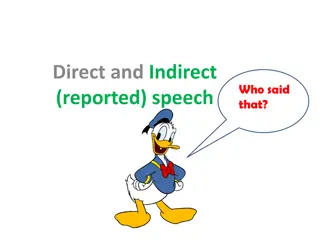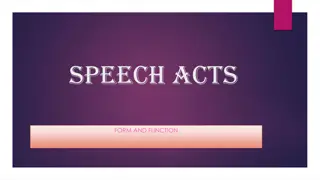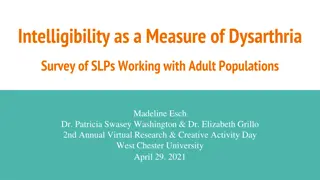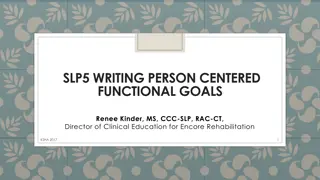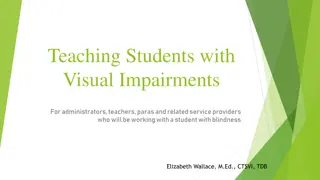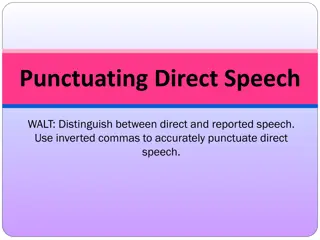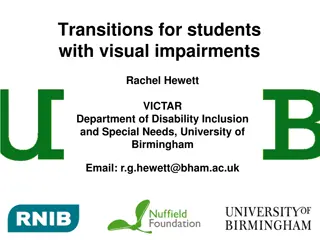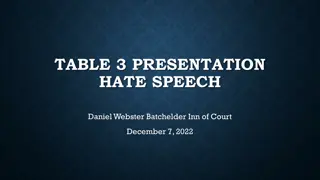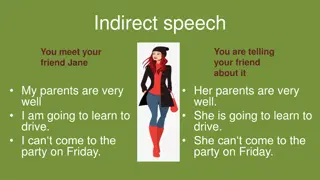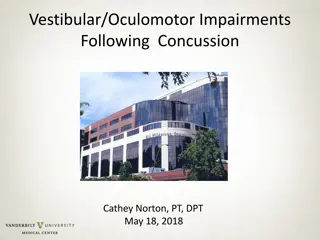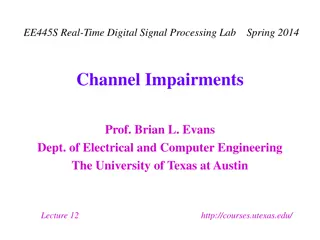Speech Development and Impairments
Determining the need for an articulation referral, understanding normal speech development, differentiating between speech disorder and speech difference, recognizing articulation deficits, and phonological deficits in atypical speech development.
Uploaded on Mar 07, 2025 | 0 Views
Download Presentation

Please find below an Image/Link to download the presentation.
The content on the website is provided AS IS for your information and personal use only. It may not be sold, licensed, or shared on other websites without obtaining consent from the author.If you encounter any issues during the download, it is possible that the publisher has removed the file from their server.
You are allowed to download the files provided on this website for personal or commercial use, subject to the condition that they are used lawfully. All files are the property of their respective owners.
The content on the website is provided AS IS for your information and personal use only. It may not be sold, licensed, or shared on other websites without obtaining consent from the author.
E N D
Presentation Transcript
Speech Disorder or Speech Difference ? Determining the Need for an Articulation Referral
What Every Teacher Should Know Normal Speech Development Florida Definition of Speech/Language Impairment Dialect and/or Primary Language Influence Eligibility for Speech Impaired Services The Role of the Teacher Other Available Services
Normal Speech Development Age 2: /b,d,h,m,n,p/ Age 3: /f,g,k,t,w,ng,/ Age 4: /kw/ Age 5: /ch,j,l,s,sh,s,z,/ Age 6: /r, v, s blends, r blends/ Age 7: /th/ (voiced and voiceless)
Normal Speech Development Many children make sound errors at some time during their speech development. These errors don t typically affect intelligibility. These errors are typically corrected through maturation, modeling and literacy development.
Florida Statute 6A-6.03012 Exceptional Student Education Eligibility for Students with Speech Impairments Definition: Speech impairments are disorders of speech sounds, fluency, or voice that interfere with communication, adversely affect performance and/or functioning in the educational environment, and result in the need for Exceptional Student Education.
Speech Differences Speech that is unique to an individual but does not significantly affect intelligibility or attract adverse attention. Dialect or Regional Variations English Language Learner Structural or Functional Inadequacy
Atypical Speech Development Articulation Deficits The effect on intelligibility depends on the type, severity and frequency of the following: Substitution: Saying one sound for another wabbit for rabbit Omission: leaving out a sound in a word i-cream for ice cream Distortion: Distorting a sound
Atypical Speech Development Phonological Deficits Incorrect production of classes of sounds Airflow sounds s, z, sh, f, th, zh Back of tongue sounds k, g, ng Clusters or blends sl, st, sk, tr, br, kr, pl Phonological deficits often affect intelligibility and do not self-correct. These errors can result in difficulty learning to read.
Atypical Speech Development Apraxia/dyspraxia is an impairment in the motor planning center of speech. Very poor intelligibility Inconsistent and random errors Often associated with language and learning difficulties Guarded prognosis
The Impact of Sound Development on Literacy Speech disorders can have a negative impact on phonemic awareness, phonics and reading fluency. Blending and segmenting Sound/symbol relationships Manipulating sounds Discriminating sounds
How the Teacher Can Help Provide opportunities for the student to hear and say sounds correctly Encourage students to participate in all speaking opportunities in the classroom Promote respectful acceptance of speech differences in the classroom
How the Teacher Can Help Show students how to produce the sound(s) correctly. Consult SLP if necessary. Provide students with practice opportunities by having them pronounce classroom words containing error sounds frequently. Give positive feedback for correct and incorrect productions.
Making a Referral If you feel that the child s errors are not a difference, but are a disorder Consult with your SLP who will give you the Describing Speech Misarticulations/ Teacher Questionnaire Referral Form The SLP will review the documents, complete a screening and set up the initial Problem Solving Team meeting to discuss options.
Available Options at First PST SLP and teacher will monitor development SLP will assist teacher and parent with additional strategies Team will recommend enrollment in the Response to Intervention General Ed Speech Improvement Program Team will recommend a comprehensive speech evaluation
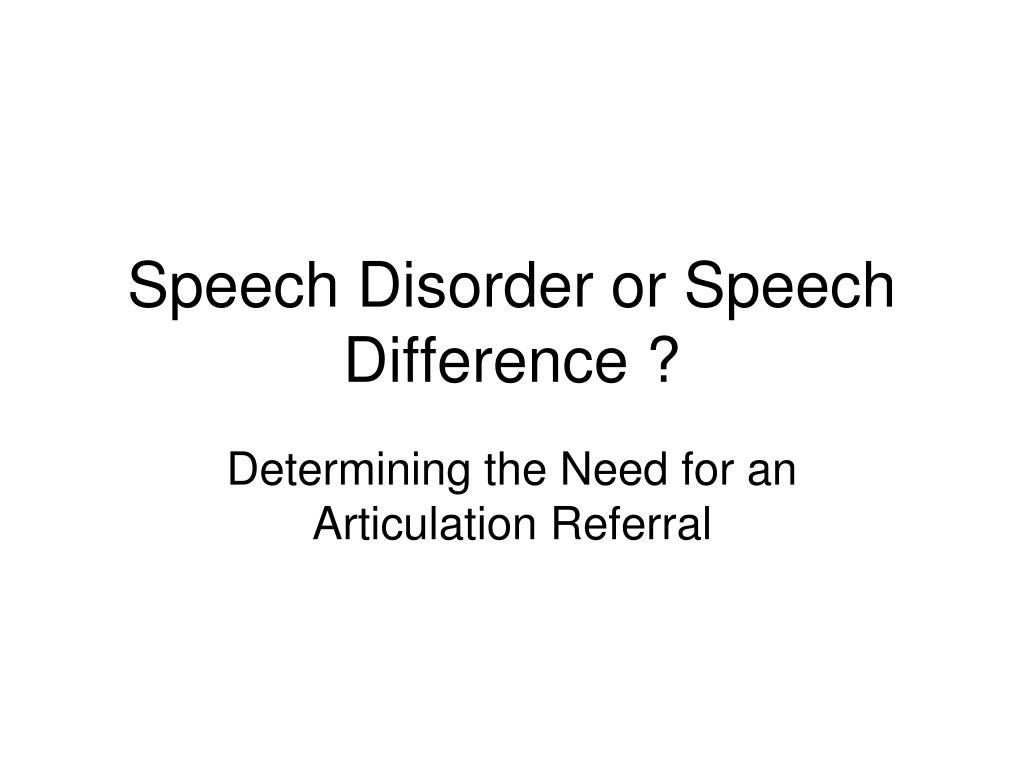


![Prevention and Combating of Hate Crimes and Hate Speech Bill [B.9B.2018]](/thumb/60513/prevention-and-combating-of-hate-crimes-and-hate-speech-bill-b-9b-2018.jpg)

